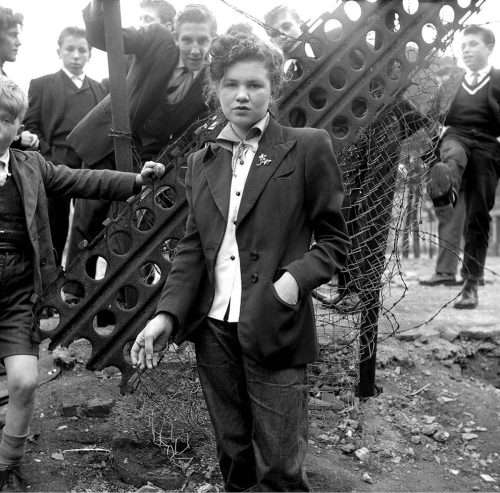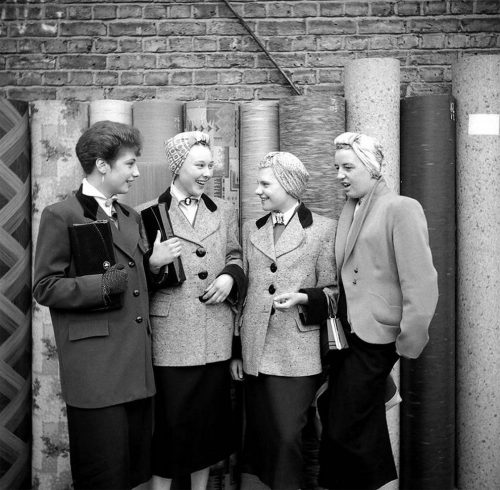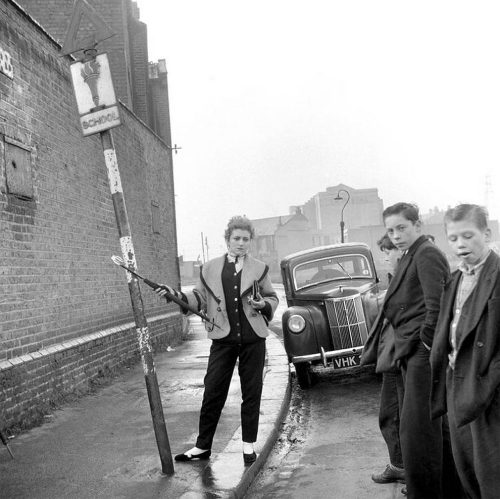A History Of Note
A history of note
In 2016 the Bank of England will issue their first polymer (plastic) banknotes. Here’s a brief history of the banknote, from Chinese origins to a worldwide phenomenon.
Paper currency was first used in China as early as AD 1000. It was the Chinese who first printed a value on a piece of paper and persuaded everyone that it was worth what it said it was. The whole modern banking system of paper and credit is built on this one simple act of faith. The Chinese had invented both paper and block printing, and this allowed the printing of paper money.

The Chinese writing along the top of this Ming dynasty banknote reads (from right to left): ‘Da Ming tong xing bao chao’ and translates as ‘Great Ming Circulating Treasure Note’. You can find out more about it here.
The Ming were the first Chinese dynasty to try to totally replace coins with paper money. After seizing power from the Mongol rulers of China in 1368, the rulers of the Ming dynasty tried to reinstate bronze coins. However, there was not enough metal available for this, and paper money, made of mulberry bark, was produced from 1375. Paper money continued to be issued throughout the Ming dynasty, but inflation quickly eroded its value. The effect of inflation was so devastating that paper money was regarded with suspicion for many years and it was not until the 1850s that paper money was issued again.

The first banknotes in Europe were issued in Sweden by the Stockholm Banco, set up in 1656 by merchant Johan Palmstruch. It produced its first notes a few years later, in 1661, as an alternative to the huge and inconvenient copper plate money which was then in circulation in Sweden. Though the designs of these early notes were simple, they were carefully printed on handmade paper. They were given official authority by impressions of several seals, including the seal of the bank, and no less than eight handwritten signatures. Johan Palmstruch’s own signature can be seen here at the top of the list, on the left of the note. The Stockholm Banco was a private business, but it had close connections with the Swedish crown and the government. It was very successful at first, but then lent too much money and issued too many notes without proper backing. Palmstruch was blamed for the difficulties and imprisoned for mismanagement. Despite the failure of his bank, he is remembered now for introducing notes which were passed freely as money, just like the banknotes that we use today.

Bills of exchange evolved with the growth of banking in Europe from the 13th century. Paper money like the banknotes we use today was not then part of everyday currency in the West, but bankers and merchants did use written records for settling payments, especially in trade. In their simplest form, bills of exchange were written instructions by one person to an agent, authorising payment to a named individual or firm at a specified future date. They were therefore a convenient way of providing credit or making payments over a distance. In this example, John Emerson in Hamburg has instructed Austin Goodwin, a merchant in Bristol, to pay £380 to Joachim Coldorph in three months’ time. If Coldorph needed money sooner, he might choose to sell the bill to a fourth party at a discounted rate. That buyer would then present the bill for payment in Bristol at the appointed date.

In the mid-19th century, individual banks in the American states issued many different banknotes. This continued during the Civil War (1861–1865), but new paper money issued by the treasuries of the United States in New York and the Confederate States in Richmond reflected the political conflict. In the North, the first public paper money issued under the Constitution of the United States was authorised in July 1861, to finance war with the Confederacy. The back of the notes were printed in green, giving rise to the nickname ‘greenbacks’ for American bills. The colour green was chosen as that colour ink best stuck to the paper. The note shown here is an example of the second issue of 1862. On the front is a portrait of Salmon P Chase, Secretary to the Treasury.

During the First World War (1914–1918) a shortage of coins encouraged towns and regions in several European countries to issue local notes worth small sums. In Germany this Notgeld (‘emergency money’) became popular as a theme for collecting, and by the 1920s these tiny notes were produced in vast numbers with collecting, rather than spending, in mind. Designs on the notes ranged from wartime propaganda to local views or scenes from folklore. This example from the town of Hameln (Hamelin), in bright primary colours, refers to the Pied Piper, the legendary rat catcher who lured the children of the town to their deaths in the 13th century. A whole sequence of notes was issued, each one illustrating a different part of the tale.

The issuing of the £5 polymer banknote, which will bear the portrait of Sir Winston Churchill, means that England joins the growing number of countries who already use polymer technology. The durability and increased security afforded by the plastic notes have made them an attractive proposition to issuing authorities throughout the world from Australia and Nigeria to Brazil and Canada. This image shows a sheet of 32 uncut polymer banknotes printed for Clydesdale Bank in Scotland in 2015.
Discover the history of money in the British Museum’s Citi Money Gallery (Room 68), supported by Citi.
More Posts from Philosophical-amoeba and Others

Barefoot to school… Clogher, Co Tyrone, Ireland, from the Rose Shaw collection

Science Fact Friday: Tetrodotoxin, ft. a small gif because I’m avoiding my real obligations. Why does tetrodotoxin not affect its host? More studies need to be done but at least a few species possess mutated sodium ion channels. The tetrodotoxin can’t interact efficiently with the altered channels.
Another interesting tidbit: Animals with tetrodotoxin can lose their toxicity in captivity. It is suspected that the animals accumulate the toxic bacteria as a side-effect of their diet. After several years of captivity on a tetrodotoxin-bacteria-free diet, the bacterial colonies living in the animals die, residual toxin is cleared from the system, and the animal is safe to handle.

Harvard has a pigment library that stores old pigment sources, like the ground shells of now-extinct insects, poisonous metals, and wrappings from Egyptian mummies, to preserve the origins of the world’s rarest colors.

A few centuries ago, finding a specific color might have meant trekking across the globe to a mineral deposit in the middle of Afghanistan. “Every pigment has its own story,” Narayan Khandekar, the caretaker of the pigment collection, told Fastcodesign. He also shared the stories of some of the most interesting pigments in the collection.

Mummy Brown
“People would harvest mummies from Egypt and then extract the brown resin material that was on the wrappings around the bodies and turn that into a pigment. It’s a very bizarre kind of pigment, I’ve got to say, but it was very popular in the 18th and 19th centuries.”

Cadmium Yellow
“Cadmium yellow was introduced in the mid 19th century. It’s a bright yellow that many impressionists used. Cadmium is a heavy metal, very toxic. In the early 20th century, cadmium red was introduced. You find these pigments used in industrial processes. Up until the 1970s, Lego bricks had cadmium pigment in them.”
Annatto “The lipstick plant—a small tree, Bixa orellana, native to Central and South America—produces annatto, a natural orange dye. Seeds from the plant are contained in a pod surrounded with a bright red pulp. Currently, annatto is used to color butter, cheese, and cosmetics.”

Lapis Lazuli “People would mine it in Afghanistan, ship it across Europe, and it was more expensive than gold so it would have its own budget line on a commission.”
Dragon’s Blood “It has a great name, but it’s not from dragons. [The bright red pigment] is from the rattan palm.”

Cochineal “This red dye comes from squashed beetles, and it’s used in cosmetics and food.”
Emerald Green “This is made from copper acetoarsenite. We had a Van Gogh with a bright green background that was identified as emerald green. Pigments used for artists’ purposes can find their way into use in other areas as well. Emerald green was used as an insecticide, and you often see it on older wood that would be put into the ground, like railroad ties.”

Source

Beautiful Blaschka glass model of a Glaucus sea slug.
These amazing animals can give a painful sting if handled. This is because they feed on colonial cnidarians such as Portuguese man o’ war and store the venomous nematocysts of their prey for self-protection.
The Pirate Queen of the South China Sea
The Red Flag Fleet under Ching Shih’s rule went undefeated, despite attempts by Qing dynasty officials, the Portuguese navy, and the East India Company to vanquish it. After three years of notoriety on the high seas, Ching Shih finally retired in 1810 by accepting an offer of amnesty from the Chinese government. Ching Shih died in 1844, at the ripe old age of 69.At the dawn of the 1800s, a former prostitute from a floating brothel in the city of Canton was wed to Cheng I, a fearsome pirate who operated in the South China Sea in the Qing dynasty. Though the name under which we now know her, Ching Shih, simply means “Cheng’s widow,” the legacy she left behind far exceeded that of her husband’s. Following his death, she succeeded him and commanded over 1,800 pirate ships, and an estimated 80,000 men.
Her husband, Ching I, was the formidable commander of the Red Flag Fleet of pirate ships. He married a 26-year-old Ching Shih in 1801. She quickly took to the pirate life and when Ching I died six years later, Ching Shih wasn’t going to let Ching I’s adopted son, Cheung Po Tsai take over. Cheung Po Tsai, however, was more than just Ching Shih’s adopted son –- the young man had also been Ching I’s lover.
Keep reading

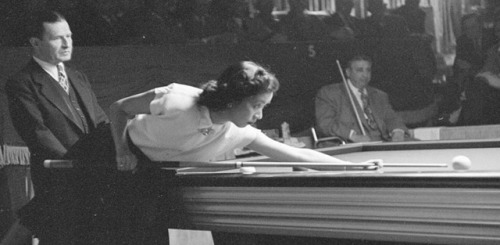
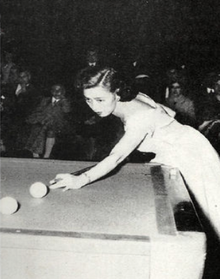

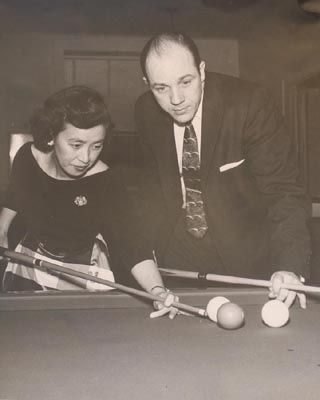

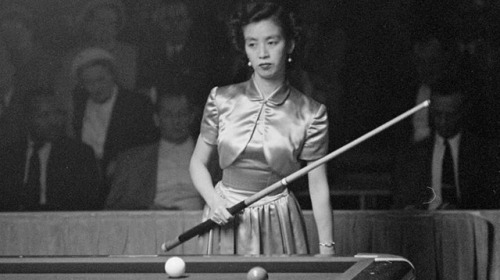
“Men want to beat me. I play men, six, seven hours a day. Men… they do not beat me.”
- Masako “Katsy” Katsura, first woman to compete for a world’s title in billiards
The “First Lady of Billiards” learned from her brother-in-law and in the 50s became Japan’s only female billiards pro. She paved the way for women to come, then left the spotlight and lived a quiet life. She died in 1995.
-
 absolute---nonsense liked this · 9 months ago
absolute---nonsense liked this · 9 months ago -
 salemoo6 liked this · 2 years ago
salemoo6 liked this · 2 years ago -
 somusicdragon liked this · 5 years ago
somusicdragon liked this · 5 years ago -
 obstacle1and1985 liked this · 6 years ago
obstacle1and1985 liked this · 6 years ago -
 drivingbeforethewind liked this · 7 years ago
drivingbeforethewind liked this · 7 years ago -
 jrittenhouse reblogged this · 8 years ago
jrittenhouse reblogged this · 8 years ago -
 jrittenhouse liked this · 8 years ago
jrittenhouse liked this · 8 years ago -
 wolfdancer liked this · 8 years ago
wolfdancer liked this · 8 years ago -
 zloyglaz reblogged this · 8 years ago
zloyglaz reblogged this · 8 years ago -
 zloyglaz liked this · 8 years ago
zloyglaz liked this · 8 years ago -
 hoosierhick2016-blog reblogged this · 8 years ago
hoosierhick2016-blog reblogged this · 8 years ago -
 roadgoeson liked this · 8 years ago
roadgoeson liked this · 8 years ago -
 anciant-blog liked this · 8 years ago
anciant-blog liked this · 8 years ago -
 ignissin liked this · 8 years ago
ignissin liked this · 8 years ago -
 walterblakeknoblock liked this · 8 years ago
walterblakeknoblock liked this · 8 years ago -
 letseatrealsoon liked this · 8 years ago
letseatrealsoon liked this · 8 years ago -
 luncheon-aspic reblogged this · 8 years ago
luncheon-aspic reblogged this · 8 years ago -
 luncheon-aspic liked this · 8 years ago
luncheon-aspic liked this · 8 years ago -
 dorotheian liked this · 8 years ago
dorotheian liked this · 8 years ago -
 afishtrap reblogged this · 8 years ago
afishtrap reblogged this · 8 years ago -
 lamprocles reblogged this · 8 years ago
lamprocles reblogged this · 8 years ago -
 luxurypassion liked this · 8 years ago
luxurypassion liked this · 8 years ago -
 archaeologicalnews-news liked this · 8 years ago
archaeologicalnews-news liked this · 8 years ago -
 esmolane liked this · 8 years ago
esmolane liked this · 8 years ago -
 hasta-el-final-de-la-linea liked this · 8 years ago
hasta-el-final-de-la-linea liked this · 8 years ago -
 ameliahcrowley liked this · 8 years ago
ameliahcrowley liked this · 8 years ago -
 etnnat-blog liked this · 8 years ago
etnnat-blog liked this · 8 years ago -
 paleontologyworld liked this · 8 years ago
paleontologyworld liked this · 8 years ago -
 ludmila199 liked this · 8 years ago
ludmila199 liked this · 8 years ago -
 shablagoooo liked this · 8 years ago
shablagoooo liked this · 8 years ago -
 spice-melange reblogged this · 8 years ago
spice-melange reblogged this · 8 years ago -
 spice-melange liked this · 8 years ago
spice-melange liked this · 8 years ago -
 clodia-metelli reblogged this · 8 years ago
clodia-metelli reblogged this · 8 years ago -
 verycuriousnocure reblogged this · 8 years ago
verycuriousnocure reblogged this · 8 years ago -
 uicspecialcollections liked this · 8 years ago
uicspecialcollections liked this · 8 years ago -
 jandir liked this · 8 years ago
jandir liked this · 8 years ago -
 historybizarre reblogged this · 8 years ago
historybizarre reblogged this · 8 years ago -
 bagoas-in-rivendell reblogged this · 8 years ago
bagoas-in-rivendell reblogged this · 8 years ago -
 comptoirdesarty-blog reblogged this · 8 years ago
comptoirdesarty-blog reblogged this · 8 years ago
A reblog of nerdy and quirky stuff that pique my interest.
291 posts
